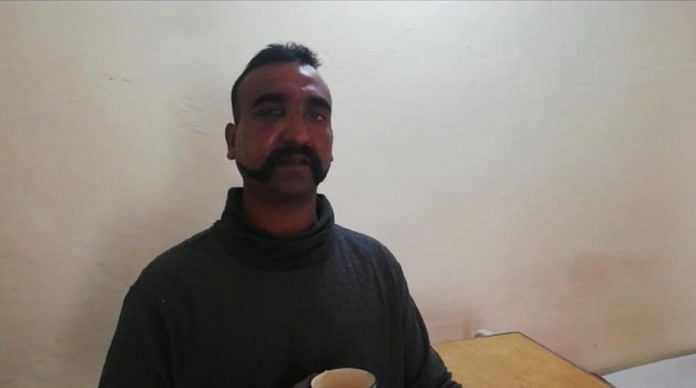New Delhi: Indian Air Force Wing Commander Abhinandan Varthaman was captured by Pakistan’s armed forces after his MiG-21 Bison was shot down in combat with opposing aircraft in Pakistan-Occupied Kashmir (PoK) Wednesday.
However, it must be noted that Abhinandan’s human rights, as well as those of any prisoner of war (PoW) are protected under ‘The Geneva Convention Relative to the Treatment of Prisoners of War’. This means that not only is Pakistan prohibited from torturing or coercing Wing Commander Abhinandan, it is also obligated to return him to India at the end of the hostilities.
Article 13 of the Convention of 1929 clearly states: “Prisoners of war must at all times be humanely treated. Any unlawful act or omission by the Detaining Power causing death or seriously endangering the health of a prisoner of war in its custody is prohibited, and will be regarded as a serious breach of the present Convention.”
Soon after Abhinandan was captured, videos began circulating on social media showing local mobs beating him up. However, Pakistani troops could be seen stopping the locals, so it may not count as a violation of the Convention.
Later in the evening, another video released by Pakistani news sources showed Abhinandan to be in good health, sipping tea and saying “the officers of the Pakistani Army have treated me very well”, while also politely declining to answer questions from the detaining officer.
Also read: India demands safe return of captured IAF pilot, hands over evidence of JeM link to Pulwama
What are the Geneva Conventions?
The Geneva Conventions are a series of international diplomatic meetings, which led to international agreements establishing the ‘Humanitarian Law of Armed Conflicts’. The main aim of these conventions was to limit the horrors of war.
The Geneva Convention agreements originated in 1864, and were substantially updated in 1929 and 1949.
The singular term ‘Geneva Convention’ refers to the agreements of 1949, which substantially updated previous agreements following the humanitarian havoc caused during the World War II (1939-45).
The 1949 agreements establish the international laws governing the “rightful conduct during war” and the “rightful treatment of prisoners of war”.
Geneva Convention on PoWs
The Geneva Convention relative to prisoners of war was first adopted in 1929, but was considerably updated in 1949, and is known as the Third Geneva Convention.
The first part of the Convention sets out the general provisions such as the definition of PoWs. Article 4 of the Convention defines a PoW as: “Members of the armed forces of a party to the conflict and members of militias of such armed forces.”
The second part lists out the general protections of PoWs. Article 12 clearly states that the well-being of PoWs is the responsibility of the state that captures them. Articles 13 to 16 talk about how PoWs must be humanely treated and their medical needs must be met.
The third part, covering ‘captivity’ is a crucial section. Article 17 here emphatically abolishes the use of any coercion against a PoW to secure information.
The article states: “No physical or mental torture, nor any other form of coercion, may be inflicted on prisoners of war to secure from them information of any kind whatever. Prisoners of war who refuse to answer may not be threatened, insulted, or exposed to unpleasant or disadvantageous treatment of any kind.”
The fourth part covers the ‘Termination of Captivity’. Here, articles 18-19 state that PoWs should be returned to the home state at the close of hostilities.
There are a couple of more parts, which address the informational and execution aspects of the treaty.
Also read: After high of air strikes, PM Modi keeps a low profile as India-Pakistan tensions escalate






